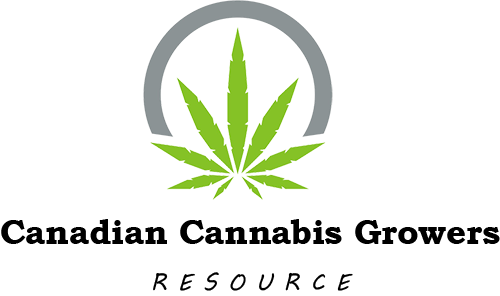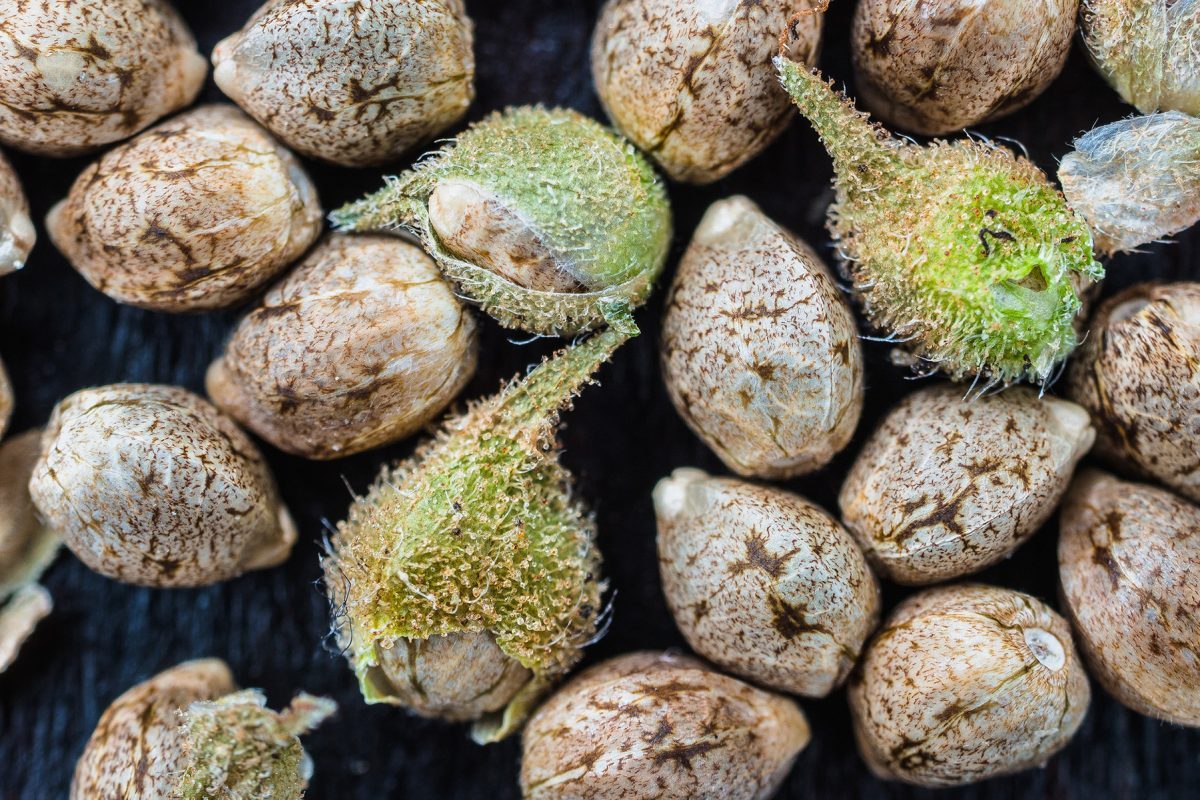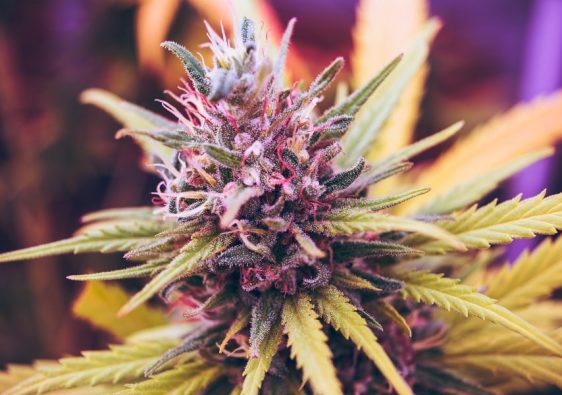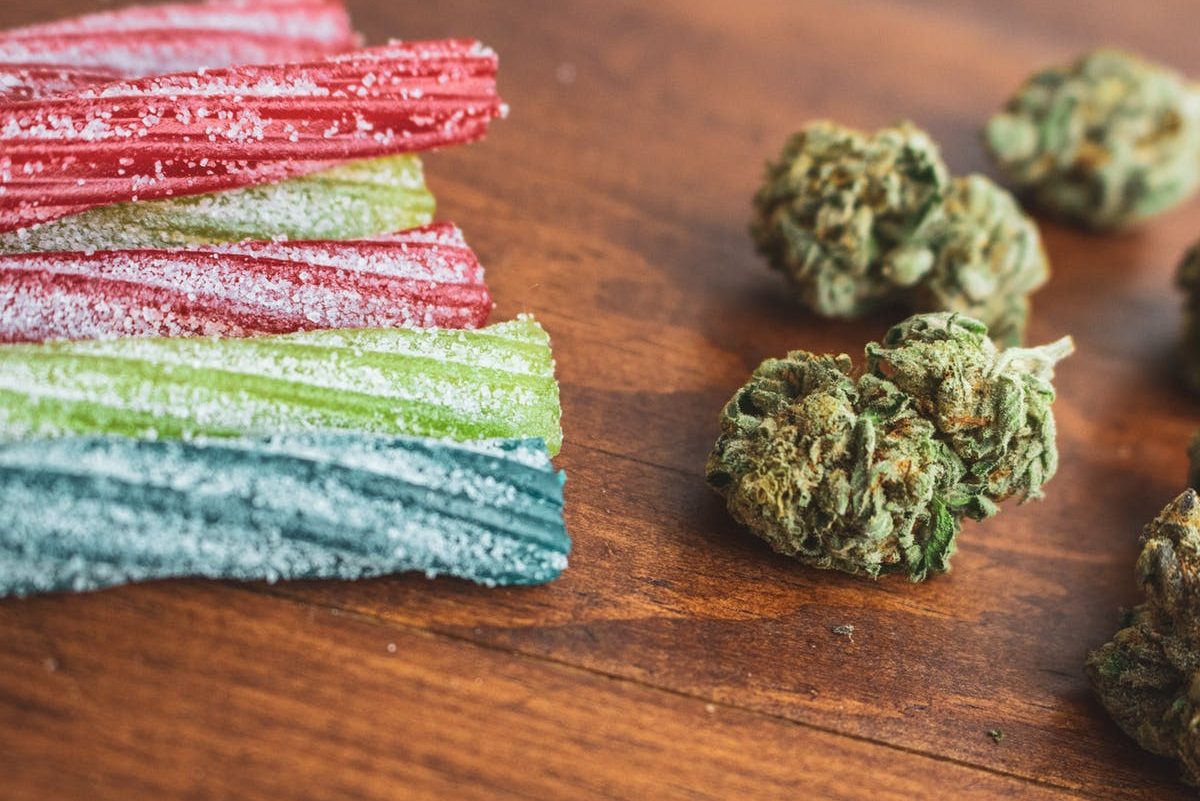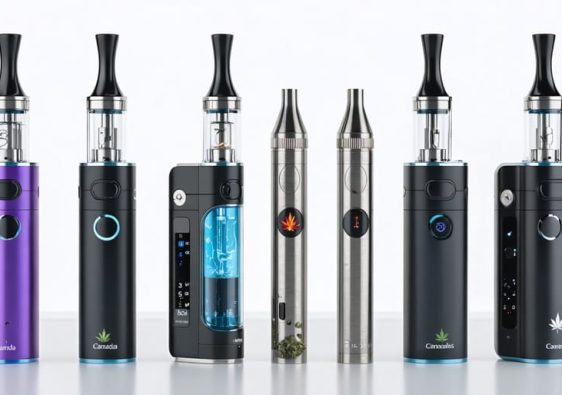Cultivating cannabis for CBD oil production requires precise control over environmental factors and careful strain selection to maximize cannabidiol yields. While exploring the evolving landscape of cannabis cultivation, many growers are discovering new techniques through communities like Dopeboo Magic Mushrooms and other educational platforms. Understanding the intricate relationship between genetics, growing conditions, and CBD production has become crucial for both home growers and commercial operations across Canada.
The surge in CBD oil’s popularity has transformed cultivation practices, with growers now specifically optimizing their operations for CBD-rich strains. From carefully controlled lighting schedules to precise nutrient management, every aspect of the growing process influences the final CBD content. This methodical approach to cultivation, combined with advanced extraction techniques, has opened new possibilities for producing high-quality CBD oil while adhering to Canadian regulations.
Whether you’re a seasoned cultivator or just starting your journey, mastering CBD-focused cannabis cultivation requires a deep understanding of both traditional growing principles and modern innovations. The key lies in selecting the right genetics, maintaining optimal growing conditions, and implementing proven extraction methods to achieve the highest possible CBD yields.
CBD-Rich Cannabis Strains for Oil Production
High-CBD Genetics
For cultivators focused on CBD production, understanding cannabis genetics is crucial to success. Several CBD-rich strains have gained popularity in Canada’s legal market, offering excellent options for both personal and commercial cultivation.
Cannatonic is widely recognized as a pioneer CBD strain, typically producing CBD levels of 6-17% with minimal THC. This strain performs well in controlled indoor environments and offers consistent results for first-time growers.
Charlotte’s Web, famous for its medical applications, delivers impressive CBD content while maintaining THC levels below 0.3%, making it compliant with strict regulations. It’s particularly well-suited to Canada’s indoor growing conditions.
ACDC has earned its reputation among Canadian cultivators for its remarkable 20:1 CBD to THC ratio. This strain thrives in greenhouse settings and demonstrates good resistance to common mold issues prevalent in humid Canadian conditions.
For northern outdoor growers, CBD Comfort is an excellent choice, featuring genetics specifically adapted to shorter growing seasons. It typically produces CBD levels between 8-14% and shows impressive resilience to temperature fluctuations.
Remember to source seeds only from licensed Canadian suppliers to ensure both legal compliance and genetic authenticity. Keep detailed records of your growing process to identify which strains perform best in your specific setup.
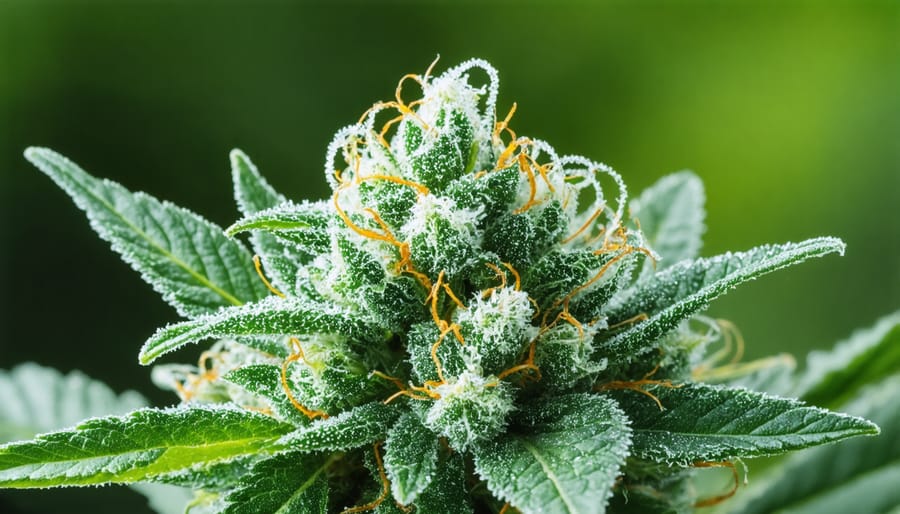
CBD:THC Ratios
The ratio between CBD and THC in cannabis plants plays a crucial role in oil production, particularly for cultivators aiming to meet specific market demands. In Canada’s legal framework, understanding these ratios helps growers optimize their crops for desired effects and compliance requirements.
High-CBD strains typically feature ratios ranging from 20:1 to 1:1 CBD:THC. For medicinal purposes, many cultivators aim for ratios of 16:1 or higher, which maximize CBD’s therapeutic benefits while minimizing psychoactive effects. Popular strains like Charlotte’s Web and Cannatonic are known for their high CBD content.
When breeding for specific ratios, it’s essential to understand that environmental factors can influence final cannabinoid levels. Stress, light exposure, and harvest timing all play roles in determining the final CBD:THC ratio. Canadian growers often select genetics that perform well in our climate while maintaining desired cannabinoid profiles.
For consistency in oil production, maintaining stable growing conditions is crucial. Regular testing throughout the growing cycle helps monitor cannabinoid development, allowing growers to adjust conditions as needed. Remember that different phenotypes of the same strain may express varying ratios, so careful selection and cloning of successful plants helps maintain consistency in future crops.
Cultivation Techniques for Maximum CBD Content
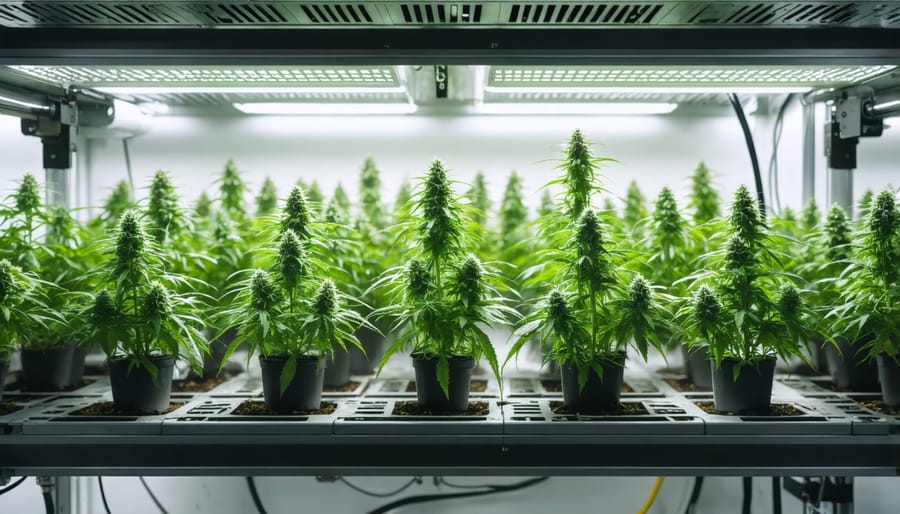
Environmental Factors
Environmental control plays a crucial role in maximizing CBD production in cannabis plants. To achieve the best results, growers need to maintain optimal LED lighting conditions, typically providing 18-24 hours of light during the vegetative stage and 12 hours during flowering. CBD-rich strains typically thrive under full-spectrum lights with higher blue light content during vegetation and increased red light during flowering.
Temperature management is equally important, with ideal daytime temperatures ranging between 20-25°C (68-77°F) and nighttime temperatures slightly cooler at 18-22°C (65-72°F). Maintaining these ranges helps prevent stress that could reduce CBD production while promoting healthy growth and terpene development.
Humidity levels should follow a gradual decrease as plants mature. During the vegetative stage, maintain relative humidity between 50-70%, then reduce it to 40-50% during flowering. In the final weeks before harvest, lower humidity to 35-45% to prevent mold and optimize resin production. This humidity curve mimics natural conditions and encourages the plant to produce more protective compounds, including CBD.
Remember to monitor these factors consistently and make gradual adjustments. Sudden environmental changes can stress plants and potentially reduce CBD content. Using automated climate control systems can help maintain stable conditions, especially during Canadian seasonal changes.
Nutrient Management
CBD-rich cannabis plants have specific nutritional needs that differ slightly from THC-focused varieties. During the vegetative stage, these plants require higher levels of nitrogen to support robust leaf and stem development. A balanced NPK ratio of 3-1-1 works well for this phase, with weekly feedings at half-strength to prevent nutrient burn.
As your plants transition to flowering, reduce nitrogen while increasing phosphorus and potassium. A 1-3-3 ratio supports optimal CBD production and bud development. Many experienced Canadian growers find success with organic amendments like worm castings, bat guano, and kelp meal, which provide a full spectrum of micronutrients essential for CBD expression.
Calcium and magnesium are particularly crucial for CBD-rich strains. Consider supplementing with Cal-Mag, especially if you’re using filtered water or growing in coco coir. Maintain a pH between 6.0-6.5 for soil and 5.5-6.0 for hydroponic systems to ensure optimal nutrient uptake.
Monitor your plants closely for signs of deficiency or excess. Yellow leaves might indicate nitrogen deficiency, while dark green leaves with burnt tips often signal nitrogen excess. Remember that CBD-rich strains can be more sensitive to nutrient fluctuations, so start with lower concentrations and adjust based on your plants’ response. Keep detailed records of your feeding schedule to fine-tune your program over multiple grows.
Harvest Timing
Timing your harvest correctly is crucial for maximizing CBD content in your cannabis plants. Unlike THC, which peaks earlier in the flowering stage, CBD typically reaches its optimal levels slightly later in the plant’s lifecycle. The key is to monitor your trichomes – those tiny, crystal-like structures on the buds and surrounding leaves.
For CBD-rich strains, aim to harvest when approximately 70-90% of the trichomes have turned from clear to a milky white colour, with some beginning to show amber hues. This usually occurs between weeks 8-10 of the flowering stage, though this can vary by strain and growing conditions.
Watch for these additional harvest indicators:
– Pistils (hair-like structures) have mostly darkened and curled inward
– Leaves begin to yellow and curl
– Buds feel firm when gently squeezed
– Strong, developed aroma
– Calyxes are swollen
Regular testing of small samples can help determine peak CBD levels. Many Canadian cultivators use portable testing devices to monitor cannabinoid development. Remember that harvesting too early can result in lower CBD content, while waiting too long may lead to degradation of beneficial compounds.
For outdoor grows in Canada, plan your harvest before the first frost, typically in late September or early October, depending on your region. Indoor growers have more flexibility but should still maintain strict attention to these visual cues for optimal CBD production.
Extraction Methods and Equipment
Safe Extraction Methods
For Canadian home growers, extracting CBD oil safely requires adherence to both legal guidelines and proper safety protocols. The most recommended method for home extraction is the cold-press technique, which involves mechanically pressing cannabis material to release its oils without the use of potentially dangerous solvents.
Another approved method is ice-water extraction, which uses cold temperatures and agitation to separate trichomes from plant material. This process is particularly safe as it doesn’t involve any flammable substances or complex equipment. The resulting product can then be further processed into CBD oil using food-grade oil as a carrier.
It’s crucial to note that chemical solvent-based extractions, such as those using butane or ethanol, are strictly prohibited for home use in Canada. These methods require special licensing and should only be performed in professional laboratory settings.
For those interested in making CBD-infused oils at home, the simplest legal method is the long-steep process. This involves decarboxylating your cannabis material in an oven at low temperatures (around 115°C) for about 30-40 minutes, then combining it with a carrier oil like MCT or olive oil. The mixture is then gently heated in a double boiler for several hours, never exceeding 100°C.
Remember to always work in a well-ventilated area and keep detailed records of your process. While these methods may not yield the same concentration as commercial extractions, they provide a safe and legal way for home growers to create their own CBD oils. Start with small batches to perfect your technique before scaling up your production.
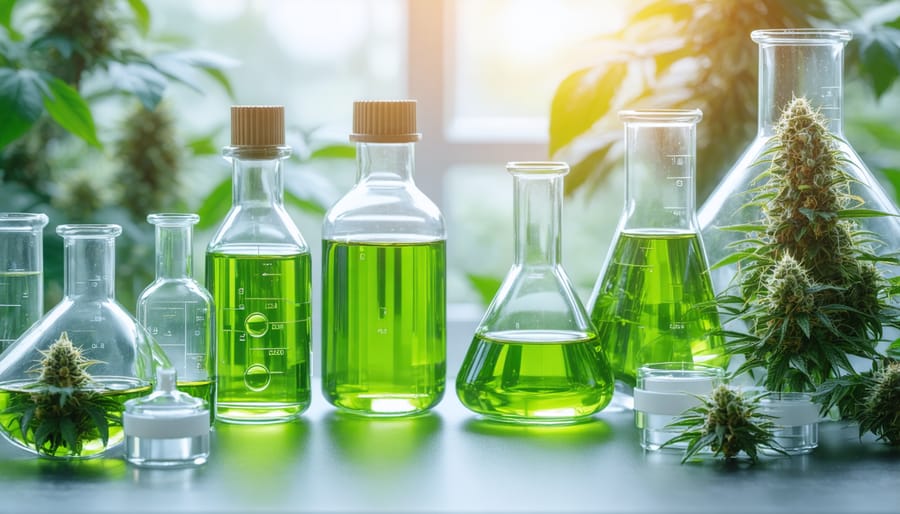
Quality Control
Quality control is paramount in CBD oil production, especially within Canada’s strictly regulated cannabis industry. Regular testing throughout the cultivation and extraction process ensures consistency, safety, and compliance with federal standards.
Professional laboratories analyze CBD oil samples for potency, testing THC and CBD levels to verify they meet labeling requirements. They also screen for potential contaminants including pesticides, heavy metals, residual solvents, and microbial growth. For Canadian cultivators, maintaining detailed records of these test results is mandatory and helps establish product reliability.
Proper storage conditions play a crucial role in maintaining oil quality. CBD oil should be kept in dark, airtight containers at room temperature, away from direct sunlight and heat sources. Regular monitoring of storage conditions helps prevent degradation and ensures the product maintains its therapeutic properties.
Implementation of Good Manufacturing Practices (GMPs) throughout the production process is essential. This includes regular equipment calibration, standardized cleaning protocols, and detailed documentation of all procedures. Many successful cultivators also establish in-house quality control checkpoints at various stages of production.
For small-scale growers, working with certified testing facilities and maintaining meticulous records of growing conditions, extraction methods, and storage practices helps ensure consistent quality. Regular staff training on quality control procedures and staying updated with industry standards are also vital components of a robust quality assurance program.
Legal Considerations
Under Canadian law, individuals interested in CBD oil production for personal use must navigate specific regulatory frameworks. Understanding the legal requirements for cannabis cultivation is essential before starting your CBD journey.
For personal cultivation, Canadians are permitted to grow up to four cannabis plants per household, regardless of the number of adults living there. However, when it comes to CBD oil production, there are additional considerations. While you can legally grow cannabis for personal use, extracting CBD oil at home requires careful attention to safety and compliance.
It’s important to note that selling homemade CBD oil is strictly prohibited without proper licensing. The Cannabis Act restricts the sale of any cannabis products, including CBD oil, to licensed producers and retailers only. Home growers must limit their production to personal use and sharing within legal limits.
Quebec and Manitoba currently maintain restrictions on home cultivation, so residents of these provinces should be aware of their local regulations. Additionally, landlords and property owners may have their own restrictions on cannabis cultivation, which tenants must respect.
For those interested in CBD-rich strains, it’s legal to purchase seeds and starting materials from licensed sellers. Remember that all growing operations must be secured from public view and inaccessible to minors. While personal cultivation is permitted, any extraction methods involving organic solvents are prohibited due to safety concerns.
Stay informed about regulatory updates, as cannabis laws continue to evolve across Canada. Your local municipality may have additional bylaws affecting home cultivation practices.
As we’ve explored throughout this guide, CBD oil production through cannabis cultivation requires careful attention to strain selection, growing conditions, and extraction methods. Success in this endeavor comes from understanding both the science behind CBD development and the practical aspects of cultivation. Remember that maintaining proper temperature, lighting, and nutrient levels is crucial for maximizing CBD content in your plants.
For Canadian growers looking to start or improve their CBD cultivation journey, we recommend beginning with CBD-dominant strains and implementing the environmental controls discussed earlier. Join local growing communities to share experiences and learn from others who are pursuing similar goals. Stay informed about evolving regulations and best practices in the industry.
Moving forward, consider keeping detailed records of your growing conditions and results to optimize future harvests. Experiment with different techniques while maintaining consistent basic parameters. Whether you’re a home grower or scaling up for commercial production, the key to success lies in patience, attention to detail, and continuous learning. Together, we can contribute to Canada’s thriving cannabis community while producing high-quality CBD oil through sustainable cultivation practices.
